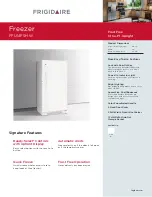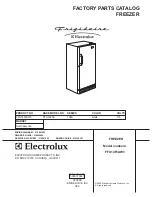
Freezing foods / storing frozen foods
Page EN-15
Suitable packaging
Packaging is important when freezing. This
will protect against oxidation, penetration by
microbes, transfer of odours and flavourings
and drying out (freezer burn).
• Only use packaging material that is
strong, impermeable to air and liquid, not
too stiff and labelled. It should be desig-
nated as suitable for freezer use.
Portions
• Create flat portions if possible; these
freeze through to the core faster.
• Expel the air from the freezer bag as this
causes the contents to dry out and takes
up space.
• Use plastic clips, rubber bands or adhe-
sive tapes to seal.
• Fill liquid containers no more ¾ full, be-
cause liquids expand when frozen.
• Do not store glass or metal containers of
liquid. The containers can burst.
• Only freeze high-proof alcohol that is
tightly sealed.
• Label the frozen food by type, quantity,
freezing and expiry date. Use waterproof
marker pens or adhesive labels wherever
possible.
Freezing capacity
Details of the freezing capacity of your appli-
ance can be found on the type plate of your
appliance.
• Adhere to the maximum freezing capacity
if possible.
Up to the maximum specified
freezing capacity
If you adhere to the maximum freezing ca-
pacity, the food will freeze at the fastest rate.
The temperature in the freezer briefly rises af-
ter placing fresh goods inside. After 12 hours,
the goods are frozen to the core.
Above the maximum specified
freezing capacity
If you want to freeze more food in one go as
an exception, freezing will take longer. Keep
fresh goods out of contact with existing fro-
zen foods, as the frozen foods could start to
defrost. If contact with stored food cannot be
avoided, we recommend that you create a
cold reserve in the freezer before freezing the
fresh goods (see “Initial freeze / Quick freeze”
on page EN-12).
After 12 hours, the goods are frozen to the
core.
Shelf life of frozen goods
The maximum permissible storage time de-
pends on the quality of the food, its prepara-
tion prior to freezing and the quality require-
ments of the individual household. For fatty
foods, shorter times apply.
Reference values
Type
Months
Butter
2–3
Ice cream
2–3
Ready meals
2–3
Fish
2–6
Pastries
2–3
Poultry
6–12
Vegetables
6–12
Cheese
2–6
Fruit
6–12
Mushrooms
6–8
Beef
6–12
Pork
2–6
Cakes and pies
4–6
Game
4–8
Sausage
2–4















































